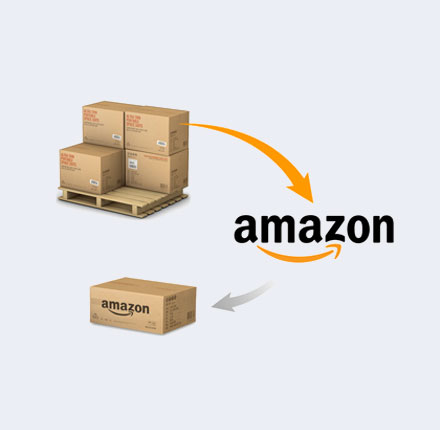 Kony 2012. If you haven’t been living under a rock for the past five months, we’re certain you’ve viewed this video at least once. Millions upon millions of users flocked to YouTube and Vimeo to view and share this video across popular social media networks. The video was created by Invisible Children, Inc. on March 5, 2012 to promote the charity’s “Stop Kony” movement, raise awareness about the activities of the Lord’s Resistance Army (LRA) and Joseph Kony’s child soldiers, and restore peace in Central Africa. So what lesson can we learn from Kony 2012? For starters, DO NOT put Video Marketing on the backburner. If it’s been stagnant on your agenda for weeks, get to it and you will soon reap the benefits.
Kony 2012. If you haven’t been living under a rock for the past five months, we’re certain you’ve viewed this video at least once. Millions upon millions of users flocked to YouTube and Vimeo to view and share this video across popular social media networks. The video was created by Invisible Children, Inc. on March 5, 2012 to promote the charity’s “Stop Kony” movement, raise awareness about the activities of the Lord’s Resistance Army (LRA) and Joseph Kony’s child soldiers, and restore peace in Central Africa. So what lesson can we learn from Kony 2012? For starters, DO NOT put Video Marketing on the backburner. If it’s been stagnant on your agenda for weeks, get to it and you will soon reap the benefits.
Benefits of Video Marketing
The harsh reality is that as an online business you simply have no choice but to make video content an integral part of your SEO efforts. Why, you ask? In a fast paced world, customers are constantly on the lookout for quicker and more efficient ways to obtain information. And with the move away from sluggish dial up Internet, video streaming no longer takes hours. They say a picture is worth a thousand words. If that’s the case, think of how many words a video could potentially communicate. A video provides customers with the ability to easily digest information in one sitting, without having to put in the effort that reading a block of text might require. And let’s not forget the entertainment factor. Combine all of the above with your Social Media efforts and you’re all set for your video to go viral.
Google Loves it!
Another very valid reason to invest in Video Marketing is because Google absolutely loves video content as it adds value to the quality, relevance and keyword instances of a page. How, you ask? Think about it… Videos are more likely to be viewed in their entirety as opposed to a text being read word for word.
This increases the amount of time a customer spends on your page and therefore boosts its quality. And you’re also more likely to receive a link back to your content if it is visually fantastic. These quality, naturally occurring backlinks are exactly the kind of indicators Google needs to know that your content is Page 1 worthy.
7 Ways to Approach Future Video Content
- Tell a Story. A successful marketing video often creatively portrays the message in the form of a coherent, attention-grabbing and engaging story.
- ‘Relatability’ Factor. Step into the mind of your target audience for a moment… Find a way to connect with them on a deeper level.
- Emotion. A video that elicits physiological responses such as happiness, anger, sadness or surprise will obtain more traffic, click-throughs, user engagement and more importantly, social shares.
- Recreate Experiences. Advancements in technology have facilitated online shopping. However many are still reluctant to participate in this new technology. Creating a video that resembles and is reminiscent of the in-store experience will make the customer feel as if they are shopping in the physical store itself.
- Customer Service. Creating ‘How To’ videos often answers questions that would otherwise require a customer service representative. This leads to higher credibility, trust and loyalty amongst customers.
- Personalization. Segmentation is the key. Personalize your video to allow for a more precise segmentation and to reach a targeted demographic.
- Power Figures and Celebrities. The influence authorities and pop culture icons have is very real. If you’re able to include either in your video, you’re bound to go viral sooner rather than later.
Let’s now look into how Google and users locate and interpret your video content. Pay close attention as it’s pivotal to the visibility of your video content!
Title, Description and Tags
Picking a catchy and concise title (65 characters) and description (160 characters) is a great place to start. The first thing to do before publishing a video is to perform keyword research. Avoid using generic titles. YouTube actually has its own version of Google Adwords Keyword Tool. Check it out! The goal is to stick with words or phrases that work and use them accordantly. Why is this important? For branding purposes, it’s essential that the textual content of the website somewhat matches the video content. If the wording is completely off, your audience will have a hard time associating your site to your video. Treat the video descriptions and tags (ideally 10-20) the same way you do your text descriptions and tags. Just make sure your keywords are mentioned in the first few sentences. Another important feature to add to your video is a text transcript. In certain cases, the audio might be too fast for your audience to follow. As a result, a text transcript may be added at the bottom of each scene. Use tools like Final Cut Pro or Express Scribe to add these transcriptions.
Where to Host?
This really depends on your target audience. Hosting your video in Vimeo might attract a different audience than if you host it on YouTube. In the end, it’s all about getting your content right before the eyes of the right kinds of people. It’s important to do your research before thinking about a hosting site. If you want to host it on your own site, make sure that you have the necessary settings to stream video as well as sufficient bandwidth.
Uploading, URLs and Sitemaps
After creating your videos, the next step is to upload all of these simultaneously. Software that can help you upload videos includes: YouTube Video Uploader and Video Swiper. When considering that your video will be viewed online, it is important to craft effective URLs. The first step is to perform keyword research. For this purpose use tools such as SpyFu or Google Insights for Search. After you have your keywords make sure you integrate them into your video URL. It’s important to keep the URL brief and user-friendly. In addition, you must include a title, description, play page URL, thumbnail URL and the raw video file location. After you’ve created your URL it’s important to proceed to creating a video sitemap. A video sitemap will ultimately allow search engines like Google to properly index your content. If your content is not submitted it will be ignored by the Googlebot. Now, let’s get into the technicalities of a sitemap:
- Remember that each sitemap file must have a maximum of 50,000 entries. If more entries are required, then you must submit multiple sitemaps.
- Make sure your files are accessible through http.
- Since Google will always check your information to make sure each video matches your site, you should examine your active pages in a text-only browser.
- If you have more than one website, it is possible to save all your sitemaps in one location.
- Remember to always verify your sites in Webmaster Tools.
Leveraging from Social Media Networks 
In the perfect world just creating a video would suffice for spreading the word, but unfortunately we must take several steps to ensure our video goes viral. After uploading videos it’s important to spread the word using popular Social Media sites. It is equally essential to track the videos’ popularity. The first step is to share links to your recently published video in Facebook, Twitter, Flicker and Social Bookmarking sites. Embedding the video on your blog and sponsoring it with other mediums like e-mail or a newsletter will help you boost your video’s popularity.
Another important goal you should always keep in mind is to create backlinks with videos. Search engines rate websites higher when their linkage is high quality, abundant and genuine. Ways to increase your backlink profile includes creating press releases in your blog or Social Media platforms for every video you publish. You can also post these press releases in the Social Media platforms of related industries that might find your content useful. The goal here is to alert your audience of new content that they might be interested in. The use of online forums might also help you generate some backlinks from your video. The way to do it is to place brief announcements in suitable places (you should always research beforehand) linking back to your video with an applicable keyword. Remember that your backlink research is just as important as your content. The goal is for the right people to link back to your site.
Keeping Track of Progress
After uploading your video and spreading the content, it’s essential to keep track of the progress. Remember to track the number of “likes” and “subscribers”. The main idea is to be able to recognize the video channel that is most effective. Use the YouTube Analytics tool to find out if your video is gaining most of its popularity from the YouTube Channel or from being embedded in a blog, Facebook page or a website. You can also use Klout to find just how influential your content is to the world.
Wrapping Up…
Video Marketing is a force to be reckoned with. If you’re wondering what the future holds for video content… Just take a look at the following statistics… KISSmetrics states that video now appears in 70% of the top 100 search results listings and viewers are anywhere from 64-85% more likely to buy after watching a product video. Bottom line is that it’s growing in popularity and its high impact form is testament that it’s not going anywhere anytime soon. So you may as well get on the train and start chugging!
Stay tuned for more information on Video Marketing tips. In the meantime, you can Contact Us today for an initial no obligation consultation.





